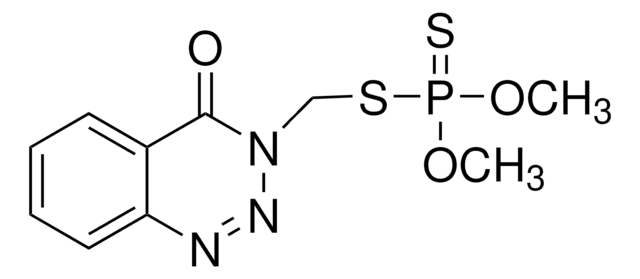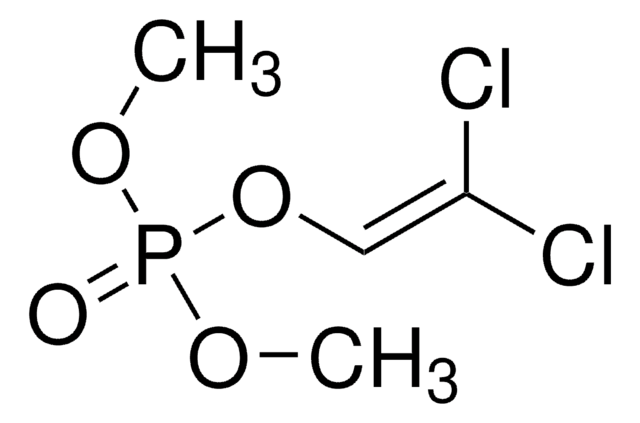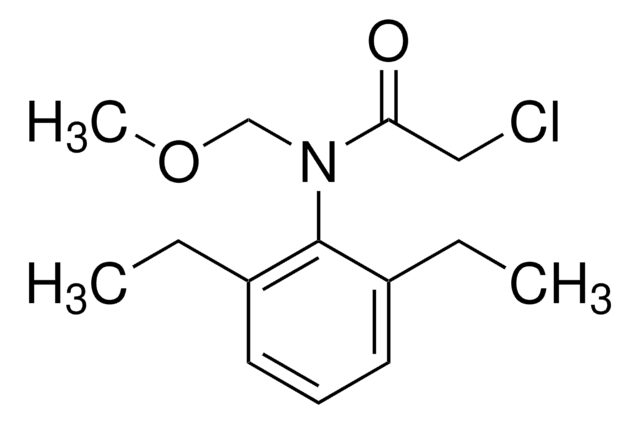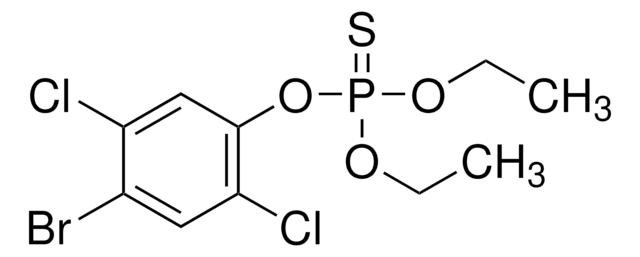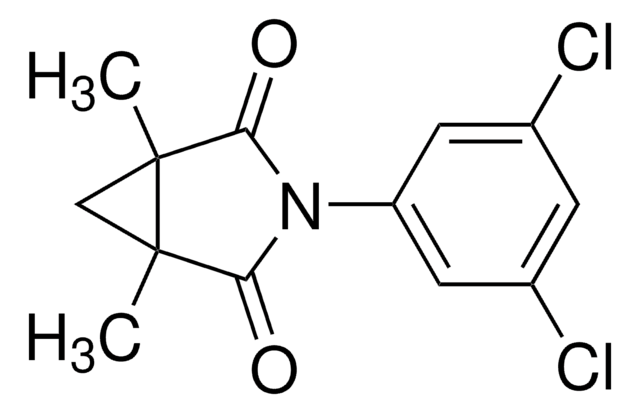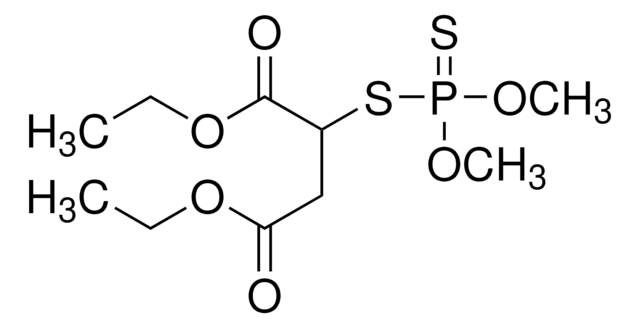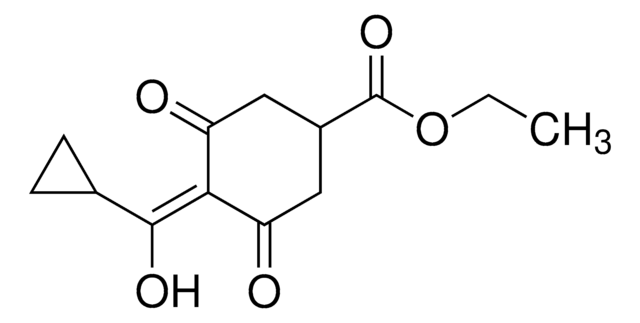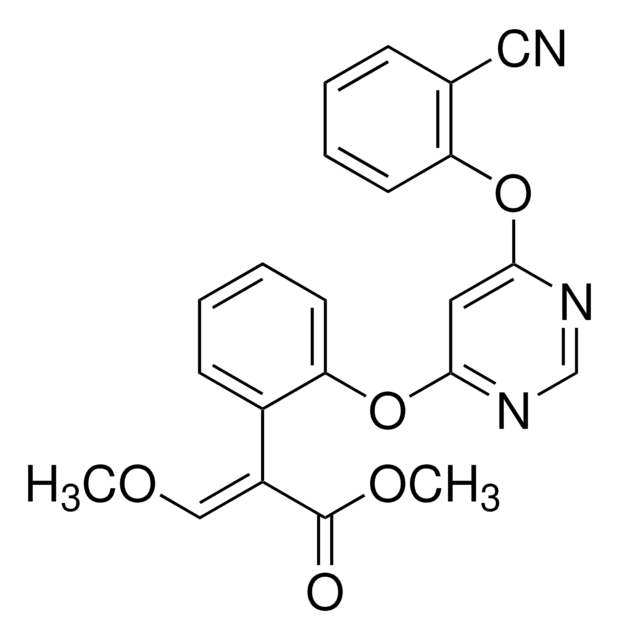About This Item
Recommended Products
grade
analytical standard
Quality Level
product line
PESTANAL®
shelf life
limited shelf life, expiry date on the label
technique(s)
HPLC: suitable
gas chromatography (GC): suitable
application(s)
agriculture
environmental
format
neat
storage temp.
2-8°C
SMILES string
CCOP(=S)(OCC)SCN1N=Nc2ccccc2C1=O
InChI
1S/C12H16N3O3PS2/c1-3-17-19(20,18-4-2)21-9-15-12(16)10-7-5-6-8-11(10)13-14-15/h5-8H,3-4,9H2,1-2H3
InChI key
RQVGAIADHNPSME-UHFFFAOYSA-N
Looking for similar products? Visit Product Comparison Guide
General description
Application
- Water samples by solid phase extraction (SPE) and ultra-high performance liquid chromatography-quadrupole time-of-flight mass spectrometry (UHPLC-QqTOF-MS).
- Cereals by QuEChERS (quick, easy, cheap, effective, rugged, and safe) extraction and gas chromatography-triple quadrupole mass spectrometry (GC-QqQ MS/MS).
- Fruits and vegetables and neutraceuticals derived from grape seed extracts by QuEChERS extraction and UHPLC-QqQ MS/MS with electrospray ionization (ESI) source and multiple reaction monitoring (MRM) mode of detection.
- Seawater samples by SPE and LC-ESI-MS/MS.
Legal Information
Not finding the right product?
Try our Product Selector Tool.
Signal Word
Danger
Hazard Statements
Precautionary Statements
Hazard Classifications
Acute Tox. 2 Oral - Acute Tox. 3 Dermal - Aquatic Acute 1 - Aquatic Chronic 1
Storage Class Code
6.1A - Combustible, acute toxic Cat. 1 and 2 / very toxic hazardous materials
WGK
WGK 3
Flash Point(F)
Not applicable
Flash Point(C)
Not applicable
Personal Protective Equipment
Choose from one of the most recent versions:
Certificates of Analysis (COA)
Don't see the Right Version?
If you require a particular version, you can look up a specific certificate by the Lot or Batch number.
Already Own This Product?
Find documentation for the products that you have recently purchased in the Document Library.
Customers Also Viewed
Protocols
analytical standard; Tokuthion, technical grade, pkg of 50 mg; Crotoxyphos; Phorate; Azinphos-ethyl; Diazinon; Azinphos-methyl; Demeton-O; Dimethoate; Chlorpyrifos-methyl
Our team of scientists has experience in all areas of research including Life Science, Material Science, Chemical Synthesis, Chromatography, Analytical and many others.
Contact Technical Service